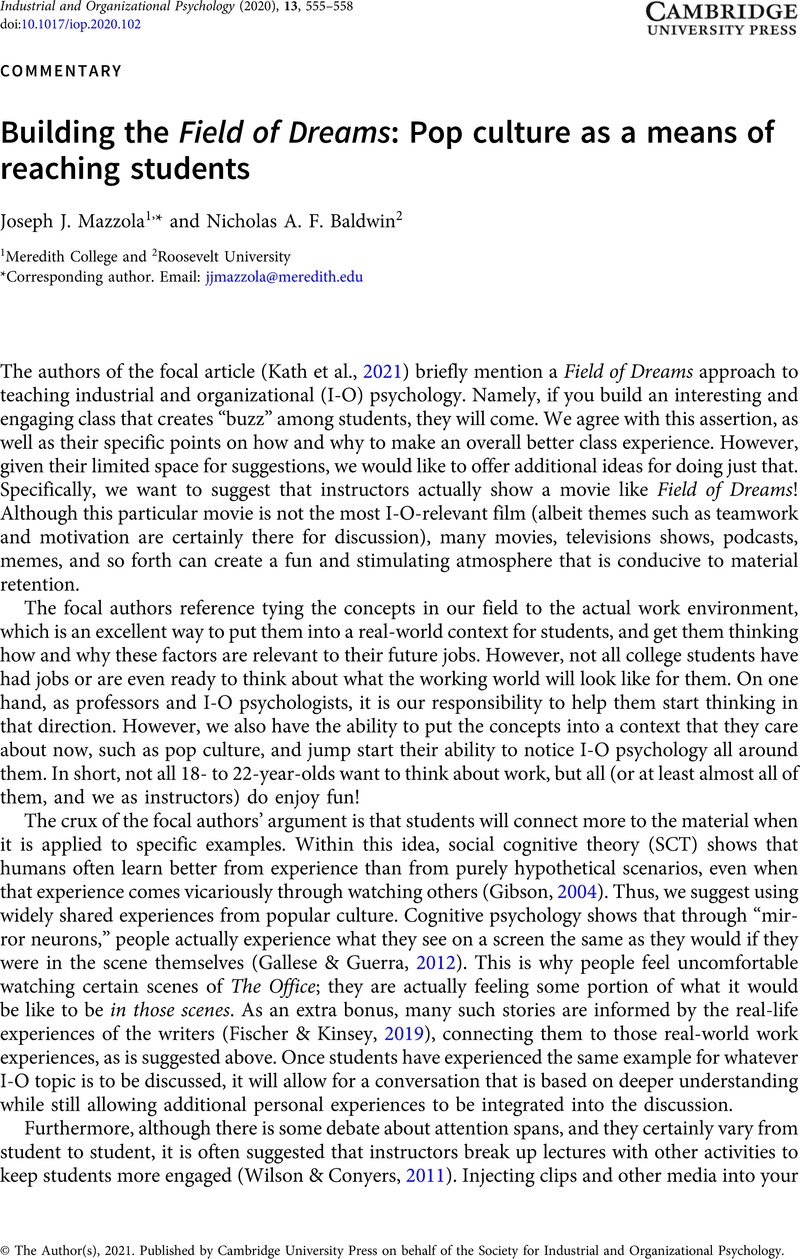No CrossRef data available.
Article contents
Building the Field of Dreams: Pop culture as a means of reaching students
Published online by Cambridge University Press: 08 February 2021
Abstract
An abstract is not available for this content so a preview has been provided. Please use the Get access link above for information on how to access this content.

- Type
- Commentaries
- Information
- Copyright
- © The Author(s), 2021. Published by Cambridge University Press on behalf of the Society for Industrial and Organizational Psychology
References
Casper, W. J., Champous, J. E., Watt, J. D., Bachiochi, P. D., Schleicher, D. J., & Bordeaux, C. (2003). Feature film as a resource in teaching I-O psychology. The Industrial-Organizational Psychologist, 41, 83–95.Google Scholar
Fischer, J., & Kinsey, A. (Hosts). (2019–present). Office ladies [A re-watch podcast of The Office]. Earwolf. https://www.earwolf.com/show/office-ladies/
Google Scholar
Gallese, V., & Guerra, M. (2012). Embodying movies: Embodied simulation and film studies. Cinema: Journal of Philosophy and the Moving Image, 3, 183–210.Google Scholar
Gibson, S. K. (2004). Social learning (cognitive) theory and implications for human resource development. Advances in Developing Human Resources, 6(2), 193–210. https://ezproxy.roosevelt.edu:2048/login?url=https://search-proquest-com.ezproxy.roosevelt.edu:2048/docview/221206794?accountid=28518
CrossRefGoogle Scholar
Kath, L., Salter, N., Bachiochi, P., Brown, K., & Hebl, M. (2021). Teaching I-O psychology to undergraduate students: Do we practice what we preach? Industrial and Organizational Psychology: Perspectives on Science and Practice, 13(4), 443–460.Google Scholar
Kernodle, T. (2009). Effective media use: Using film and television to instruct an Organizational Behavior course. American Journal of Business Education, 2(8), 37–49.Google Scholar
Wilson, D. L., & Conyers, M. A. (2011). BrainSMART: 60 strategies for increasing student learning. BrainSMART.Google Scholar


